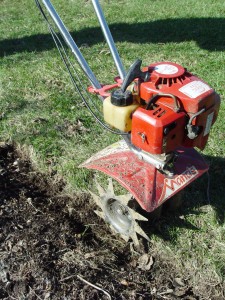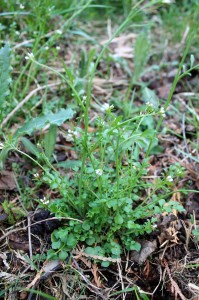Get a Jump on the Season
February 12th, 2013
Back in the day, it used to start snowing in December, and then we’d have a pretty consistent snow cover the whole way until March, when everything finally melted.
These days, it seems a majority of winter – or at least big chunks of it – are uncovered. Not only can we see grass and plants even in January and February, the ground is often not even frozen.
I’m not complaining. Especially since we dodged a bullet in that Nor’easter that blasted New England last week.
Given how crazy things get for gardeners in spring, I hope you’ve been taking advantage of civilized winter weather to get a jump on jobs that used to wait until March or April.
I’ve already got most of my beds edged, for example. I usually only neaten them once a year, and that’s one job that can be done anytime the beds can be seen and aren’t frozen.
I use one of two tools – my Mantis tiller outfitted with an edging blade and wheel, or a long-handled ice chopper. Either way, the soft ground comes up nicely during a winter thaw. The cut-off chunks are now in my compost bin.
A second job I’ve done is clear the beds of winter-annual weeds and any perennial stragglers I missed from last season.
Winter annuals are things like hairy bittercress, chickweed and purple deadnettle that actually germinate in fall or winter, then really take off just as soon as a little heat arrives in spring. These pull very easy and also go in my compost bin.
With the beds edged and weeded, the coast is clear for a fresh coat of mulch once the soil warms a bit in spring. By getting the two preliminary cleanup jobs out of the way in winter, that really streamlines the back-breaking, time-consuming job of spreading mulch later.
Tree-pruning is another job I’ve been doing. Late winter is ideal for cutting crossing branches and thinning out excess wood. It’s also a good time to make those shaping cuts since you can get a good look at the branch structure without leaves in the way. Fruit and shade trees are my main winter targets. For spring-flowering trees like dogwoods, redbuds and pears, you’ve got the option of 1.) doing the deed now or, 2.) letting the tree bloom first to get maximum show and then pruning it after the flowers finish.
The last job I’ve been doing is whacking back the ornamental grasses, the ‘Knock Out’ roses, browned-out perennials that are no longer a food source for birds and other late-blooming flowering shrubs (butterfly bush, tree-type hydrangeas, beautyberry, caryopteris, Japanese spirea and St. Johnswort). My compost bins overflow.
Don’t prune the early-blooming shrubs now. You’ll cut off the flower buds.
Those include azalea, rhododendron, pieris, mophead hydrangeas, lilac, weigela, forsythia, viburnum and ninebark. Prune those right after they’re done blooming.
We’ve still got a way to go before snow and cold are off the radar, but we might as well take advantage of whatever openings we get…









